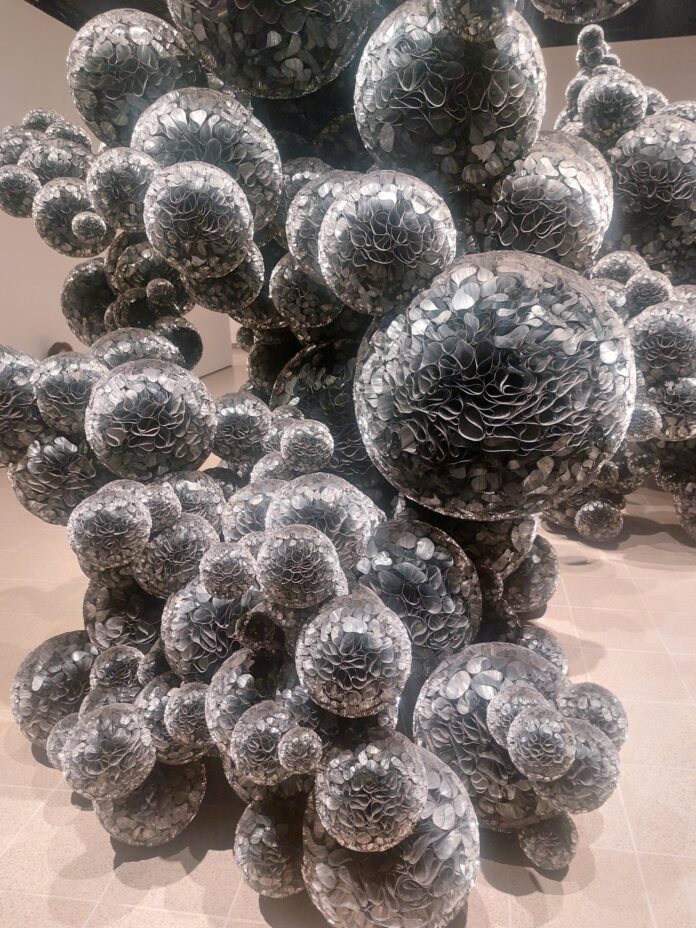
London – “”When Forms Come Alive” at the Hayward Gallery is a vibrant and dynamic exhibition that immerses visitors in the energetic interplay of movement, flux, and organic growth as interpreted by contemporary sculptors. This expansive survey spans over sixty years of art, featuring works that seemingly pulse with life, evoking sensations of oozing, undulating, blossoming, and sprawling within the gallery space.
The exhibition showcases the contributions of 21 international artists, whose works collectively explore the boundaries of physical experience in an increasingly digitized world. Among the notable artists featured are Ruth Asawa, whose ethereal wire sculptures from the 1950s and 1960s delicately balance spherical forms within hourglass shapes, creating a mesmerizing dance of suspended motion. Nairy Baghramian’s deliberately awkward forms evoke fleeting states of being and relationships in flux, while Phyllida Barlow’s anti-monumental sculptures emphasize transformation and impermanence.
Lynda Benglis, a key figure in postminimalism, presents works that celebrate transience and transformation, rejecting the sleek monoliths of her male contemporaries in favor of a more fluid aesthetic. Michel Blazy’s contributions add a sense of organic decay and renewal, while Paloma Bosquê’s sculptures reflect an exploration of materiality and form. Olaf Brzeski’s work conjures the abject and the comedic, playing with unexpected bulges and curves that evoke both living organisms and geological formations.
Choi Jeonghwa and Tara Donovan contribute large-scale installations that engage viewers in sensory experiences, with Donovan’s intricate piece resembling a sprawling, otherworldly molecular constellation. DRIFT’s kinetic Shylights mimic the natural rhythms of flowers, and Eva Fàbregas’s work embodies organic metamorphosis. Holly Hendry and EJ Hill add layers of meaning with their respective explorations of physicality and socio-political themes.
Marguerite Humeau’s multimedia sculptures evoke natural forms such as mushroom gills and honeycombs, while Jean-Luc Moulène’s knot-like constructions challenge perceptions of inside and outside spaces. Senga Nengudi’s process-oriented works highlight the interplay between form and movement, and Ernesto Neto’s installations invite tactile engagement. Martin Puryear and Matthew Ronay bring a sense of craftsmanship and surrealism to their works, respectively, while Teresa Solar Abboud’s brightly colored sculptures blend naturalistic and surreal elements.
Franz West’s contributions add a touch of the absurd, with forms that evoke both biological and geological phenomena. Each artist’s work in “When Forms Come Alive” engages viewers in ambiguous encounters with uncanny forms, creating an exhibition that illuminates the restless, transformative potential of sculpture.
Curated by Ralph Rugoff with Katie Guggenheim and Anusha Mistry, this exhibition not only celebrates the material and formal innovations in sculpture over the past half-century but also underscores the medium’s ability to rediscover and recover the lost dimensions of physical experience. The accompanying richly illustrated catalogue offers further insights into the artists and their works, making “When Forms Come Alive” a must-see for anyone interested in the evolving language of contemporary sculpture.


